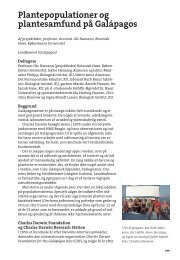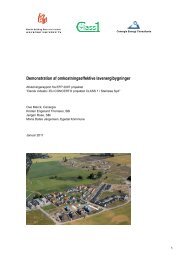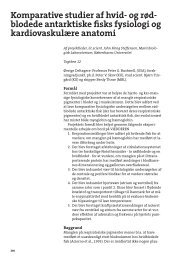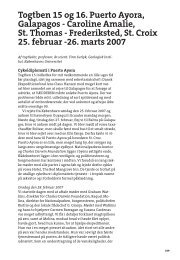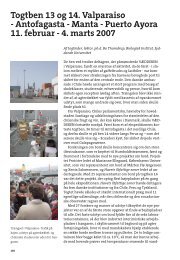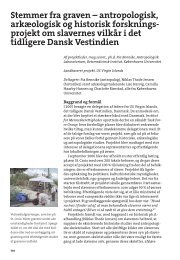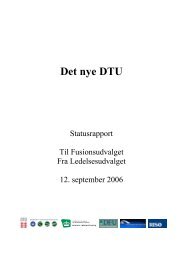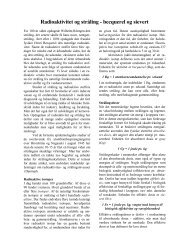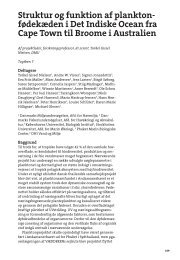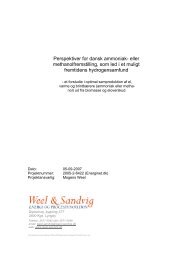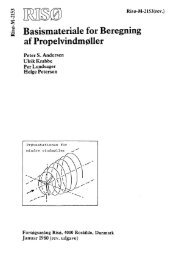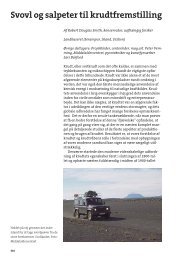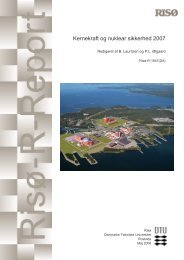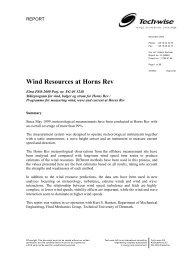Properties of hemp fibre polymer composites -An optimisation of ...
Properties of hemp fibre polymer composites -An optimisation of ...
Properties of hemp fibre polymer composites -An optimisation of ...
Create successful ePaper yourself
Turn your PDF publications into a flip-book with our unique Google optimized e-Paper software.
CONCLUSIONS<br />
Cultivation <strong>of</strong> P. radiata Cel 26 on <strong>hemp</strong> stems resulted in <strong>fibre</strong>s with higher cellulose<br />
content than water retting <strong>of</strong> <strong>hemp</strong> due to more effective degradation <strong>of</strong> pectin and<br />
lignin. The cellulose crystallinity tended to decrease with the cellulose content obtained<br />
by the fungal treatments showing that during processing part <strong>of</strong> the crystalline cellulose<br />
is converted into its amorphous form.<br />
Even though the <strong>hemp</strong> <strong>fibre</strong>s were handled with mild methods like hand peeling and<br />
fungal defibration, a <strong>fibre</strong> strength higher than 643 MPa was not obtained, which is<br />
similar to the strength <strong>of</strong> traditionally produced <strong>hemp</strong> yarn (677 MPa). The <strong>fibre</strong> strength<br />
and stiffness properties were derived from composite data using the rule <strong>of</strong> mixtures<br />
model.<br />
The effective <strong>fibre</strong> stiffness was 94 GPa in the P. radiata defibrated <strong>hemp</strong> <strong>fibre</strong>s which is<br />
high compared to literature data on flax - (50-70 GPa) and glass <strong>fibre</strong>s (72 GPa). The<br />
high stiffness and low density <strong>of</strong> the defibrated <strong>hemp</strong> <strong>fibre</strong>s compared with glass <strong>fibre</strong>s<br />
makes <strong>hemp</strong> a good alternative to glass <strong>fibre</strong>s for material construction.<br />
The calculated plant <strong>fibre</strong> strength appeared to be linearly dependent on cellulose content<br />
and independent on cellulose crystallinity and micr<strong>of</strong>ibril angle. Pure cellulose had the<br />
estimated effective strength 850 MPa that is about 10% <strong>of</strong> the strength on the molecular<br />
level.<br />
The calculated plant <strong>fibre</strong> stiffness appeared to increase linearly with cellulose content,<br />
decrease with micr<strong>of</strong>ibril angle and increase with cellulose crystallinity. Pure crystalline<br />
cellulose had an estimated stiffness <strong>of</strong> 125 GPa.<br />
ACKNOWLEDGEMENTS<br />
This work was part <strong>of</strong> the project “High performance <strong>hemp</strong> <strong>fibre</strong>s and improved <strong>fibre</strong><br />
networks for <strong>composites</strong>” supported by the Danish Research Agency <strong>of</strong> the Ministry <strong>of</strong><br />
Science. Dr. Claus Felby (The Royal Veterinary and Agricultural University) is<br />
acknowledged as supervisor for Ph.D. student <strong>An</strong>ders Thygesen. Senior scientist Poul<br />
Flengmark (Danish Institute <strong>of</strong> Agricultural Sciences) is acknowledged for supplying the<br />
<strong>hemp</strong> and Mrs. <strong>An</strong>n-S<strong>of</strong>ie Hansen (WURC) for setting up the fungal cultivation<br />
experiments. Mr. Henning K. Frederiksen (Risø National Laboratory) is acknowledged<br />
for help in composite fabrication and Mr. Tomas Fernqvist (Risø National Laboratory)<br />
for help in the chemical <strong>fibre</strong> analysis. Dr. Bo Madsen and Engineer Tom L. <strong>An</strong>dersen<br />
(Risø National Laboratory) are acknowledged for discussion and inspiration. Lecturer<br />
Kenny Ståhl is gratefully acknowledged for assistance in X-ray measurements and<br />
allowing us to use the equipment.<br />
REFERENCES<br />
Akhtar, M., Attridge, M.C., Blanchette, R.A., Myers, G.C., Wall, M.B., Sykes, M.S.,<br />
Koning, J.W., Burgess, R.R., Wegner, T.H., Kirk, T.K., 1992. The white-rot<br />
fungus Ceriporiopsis subvermispora saves electrical energy and improves<br />
strength properties during biomechanical pulping <strong>of</strong> wood. In: Kuwahara, M.,<br />
Shimada, M. (Ed.), Biotechnology in pulp and paper industry, Uni Publishers<br />
CO., Tokyo, Japan. 5, pp 3-8.<br />
140 Risø-PhD-11



